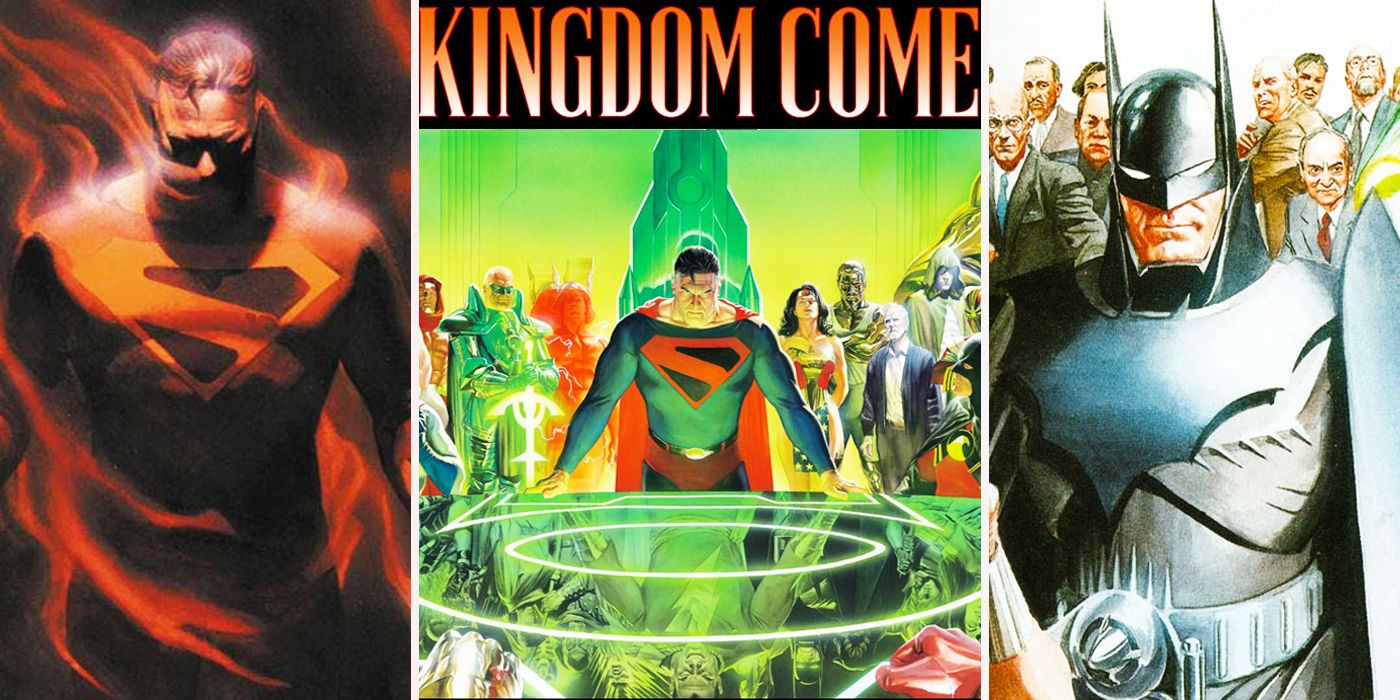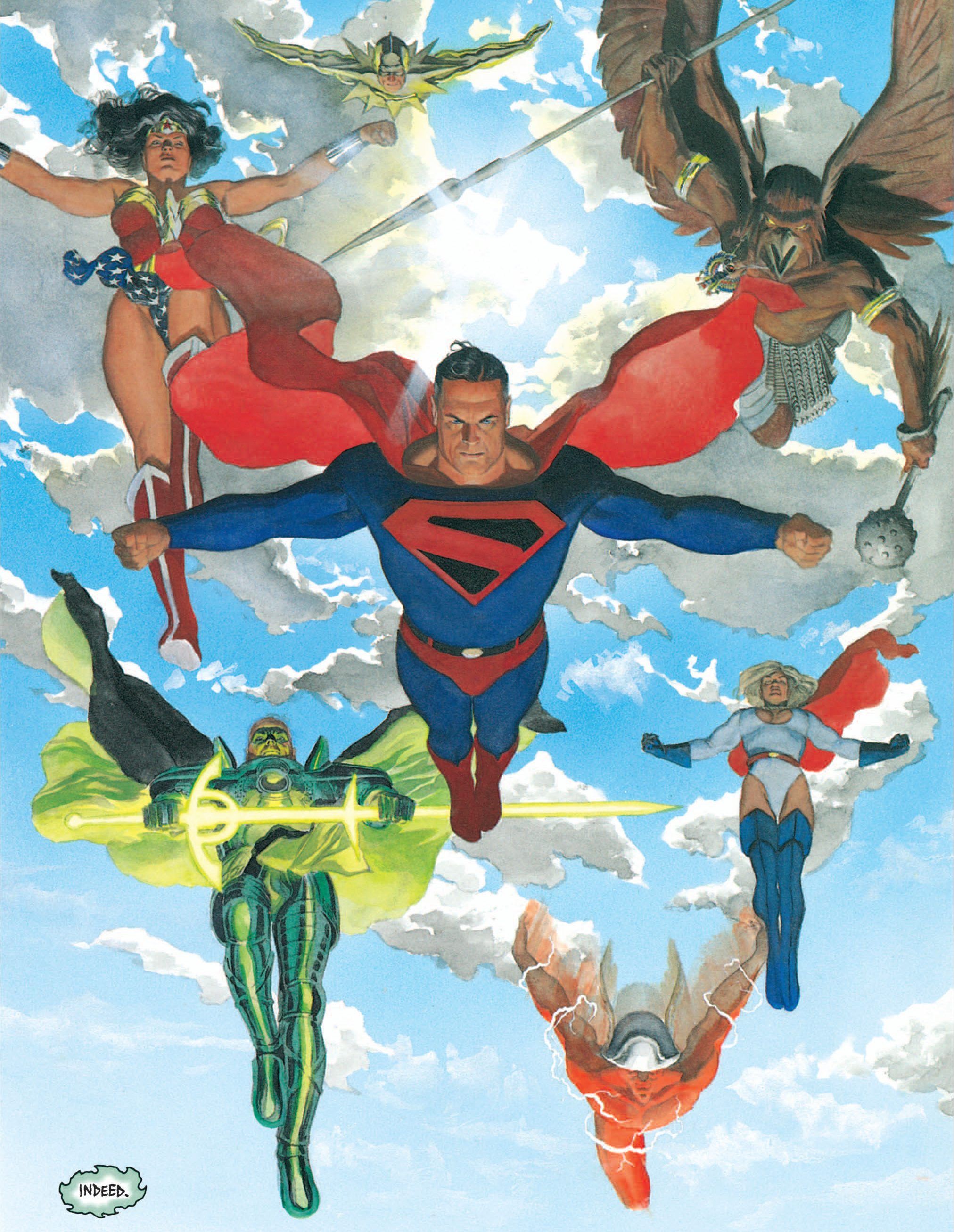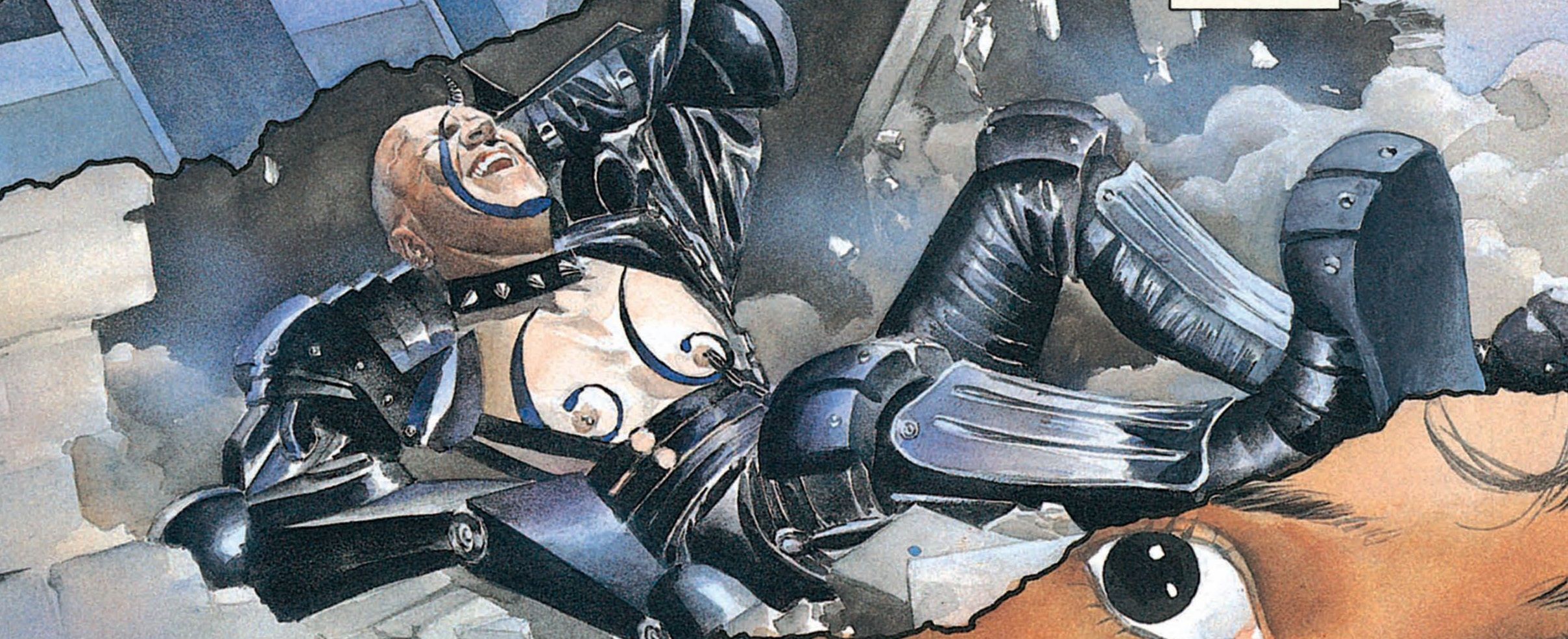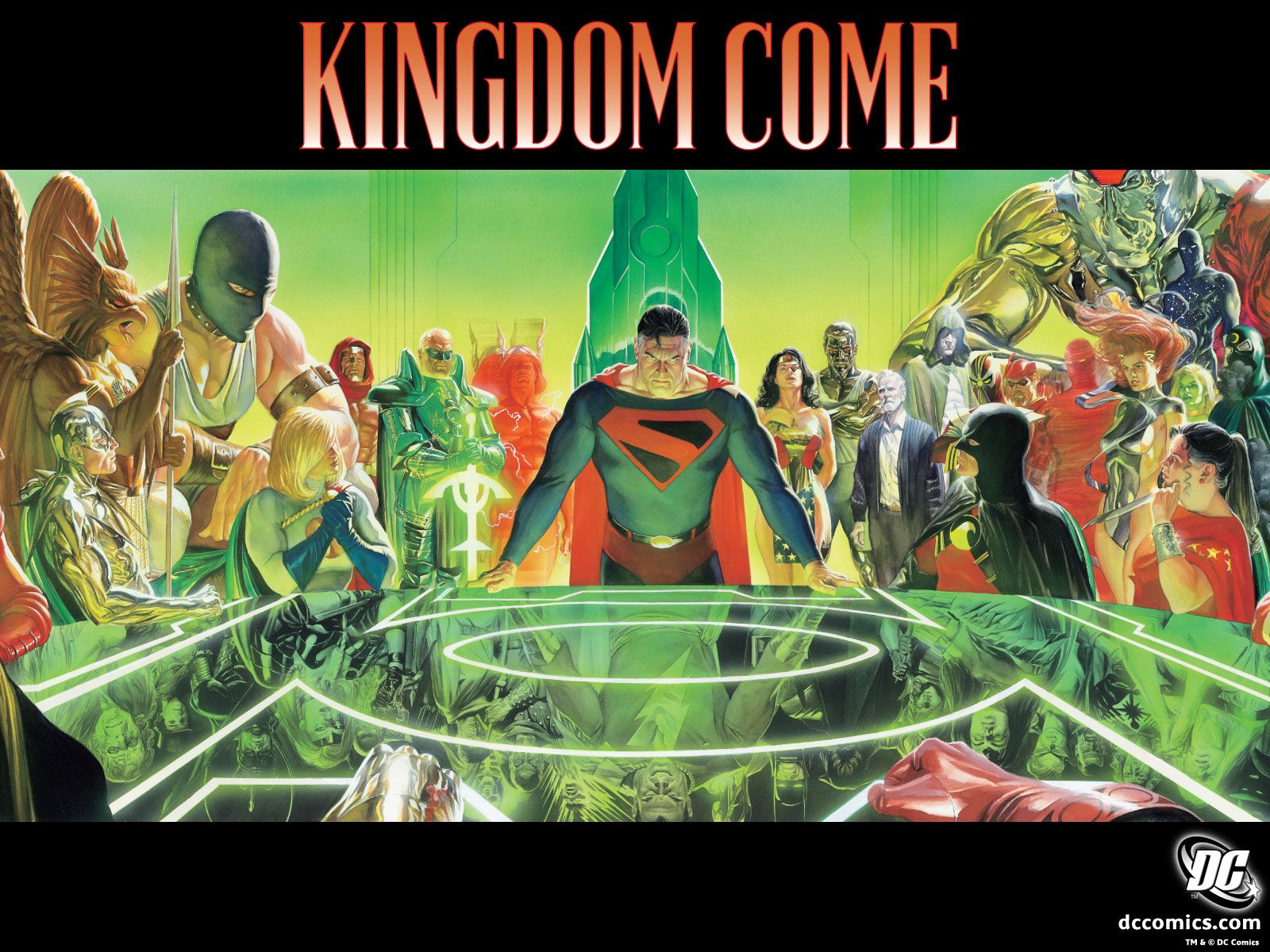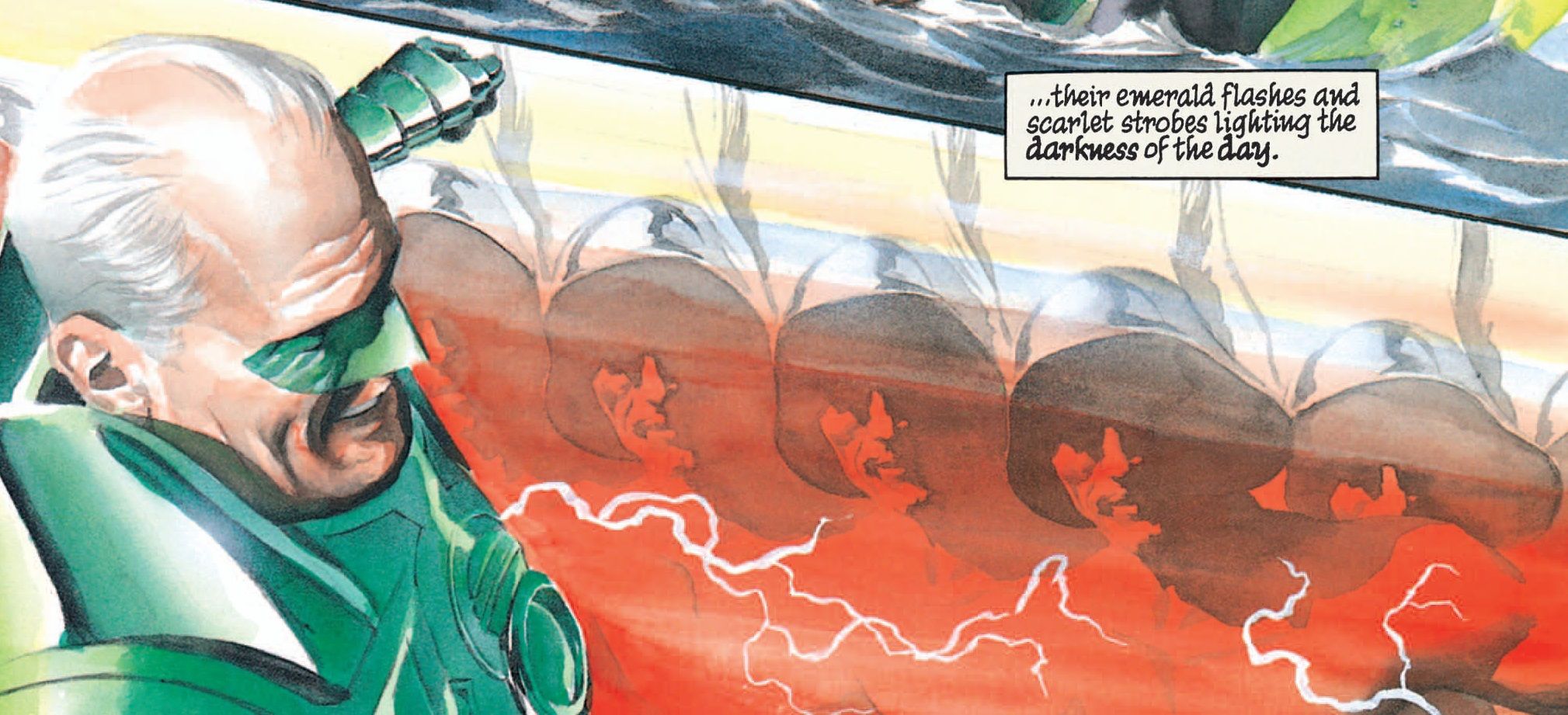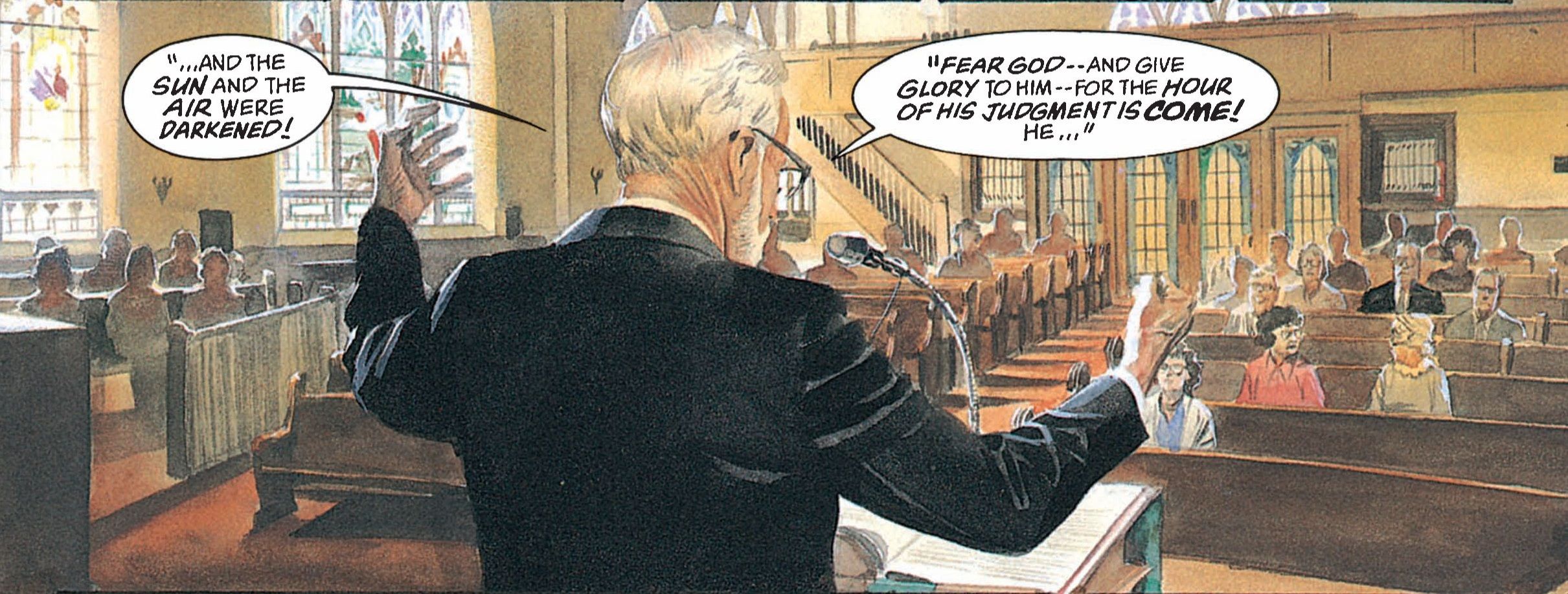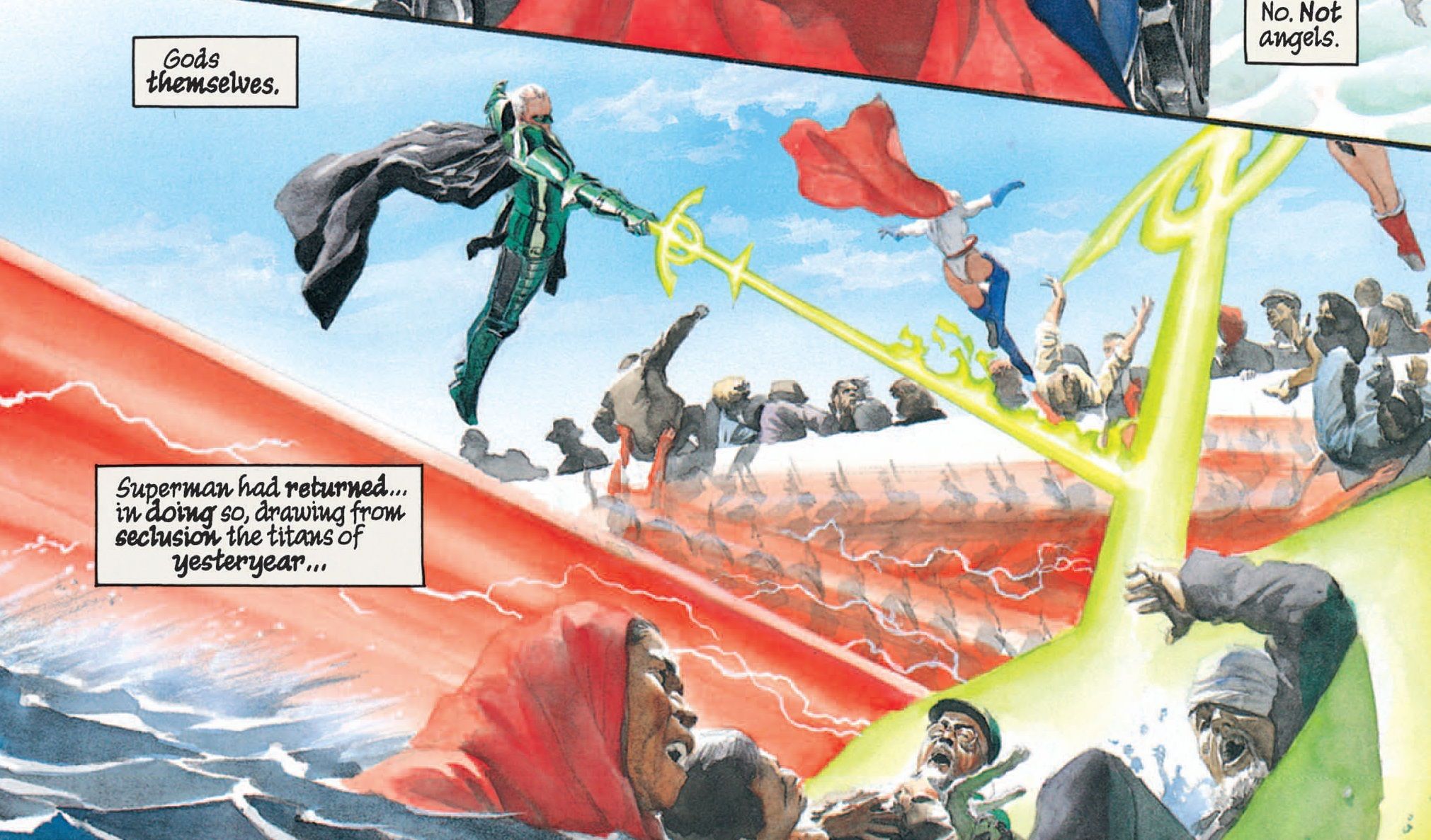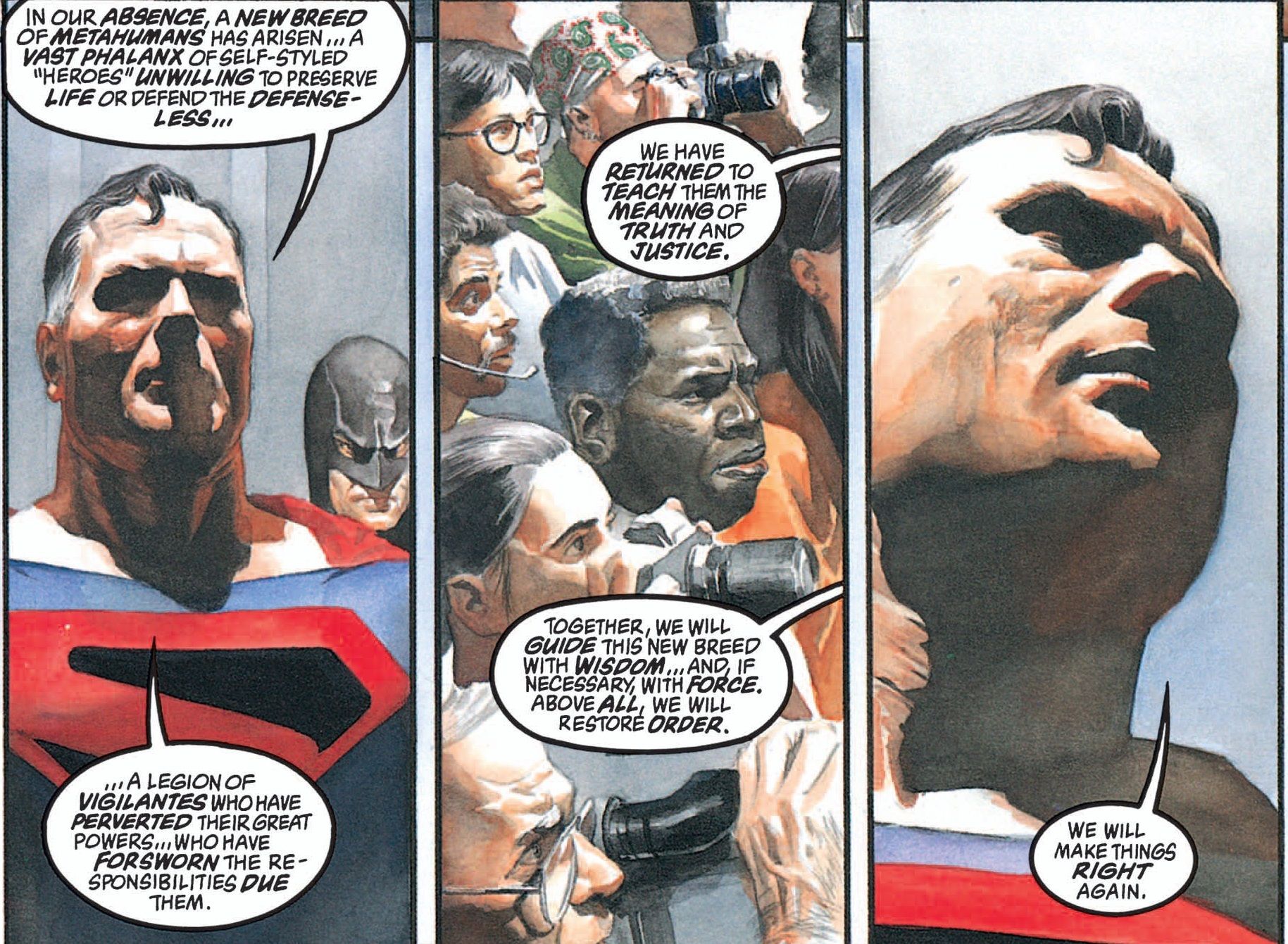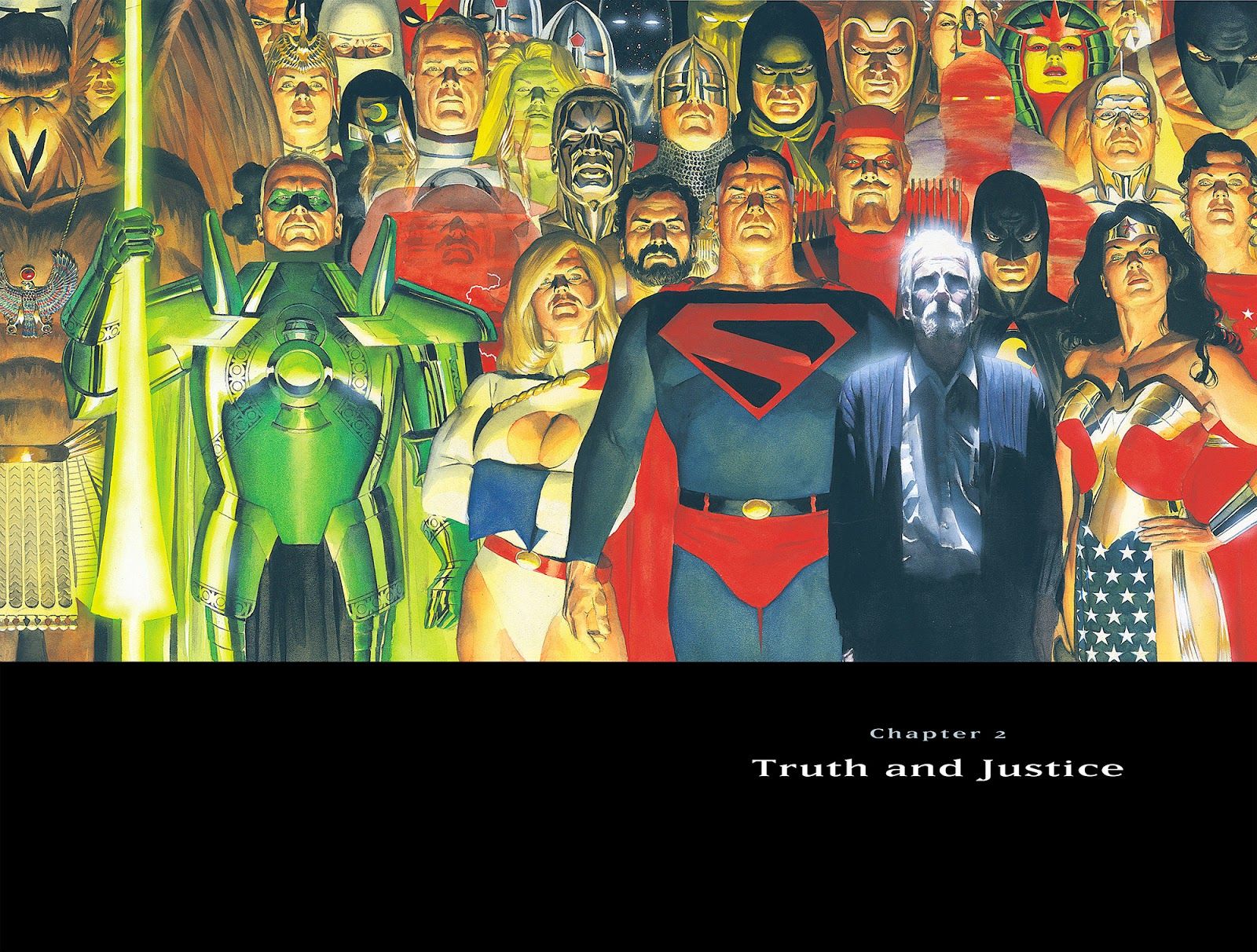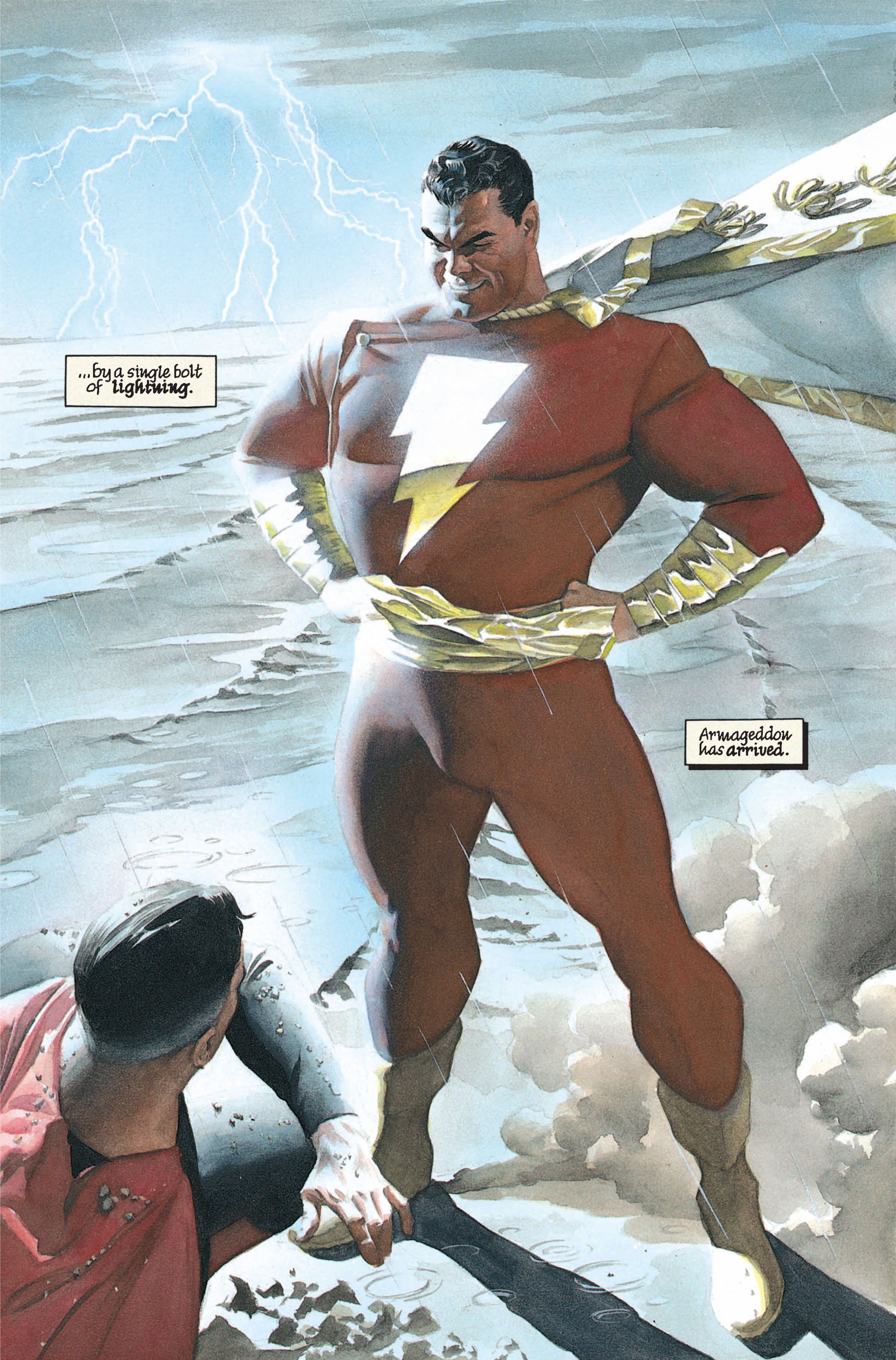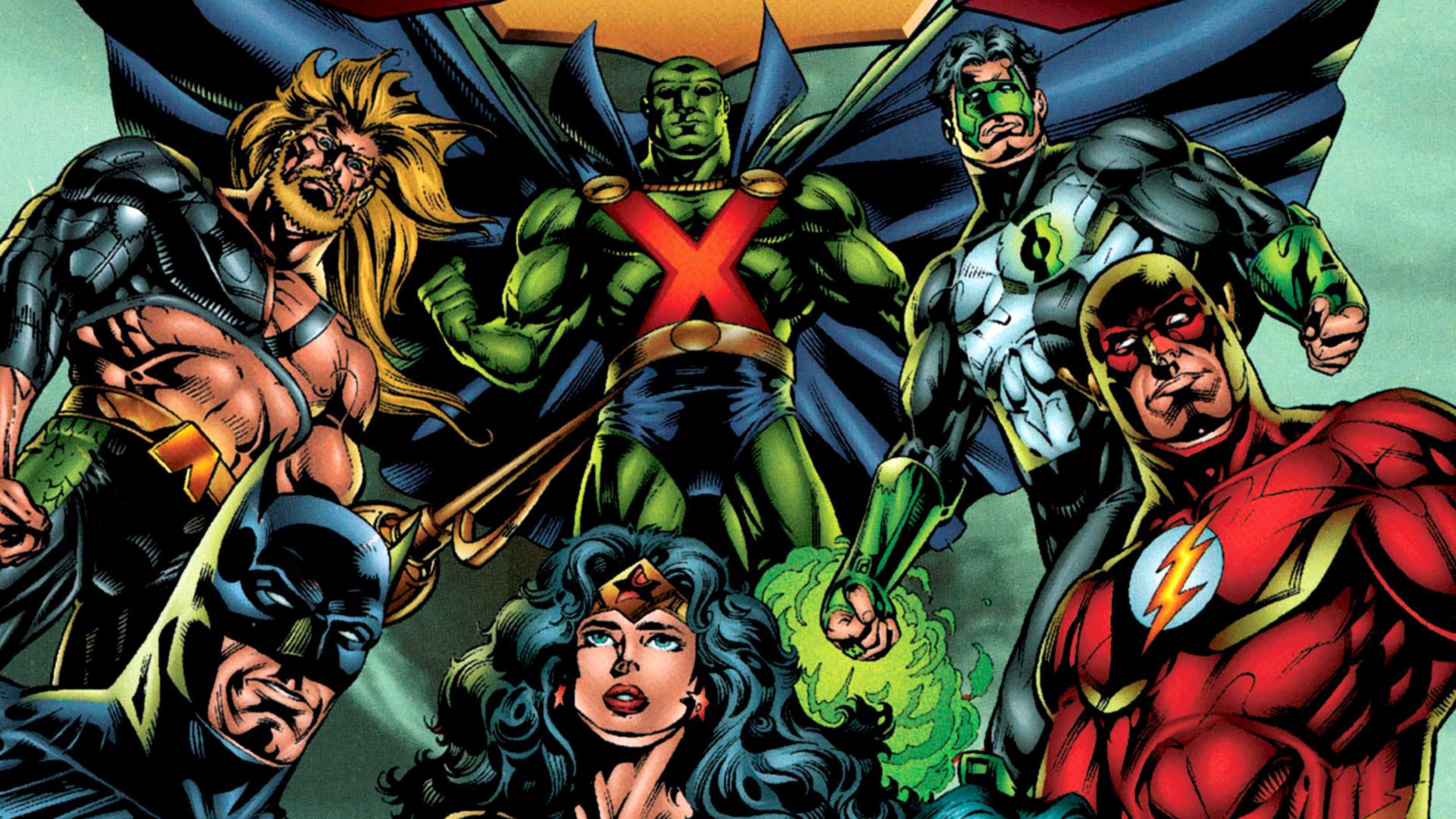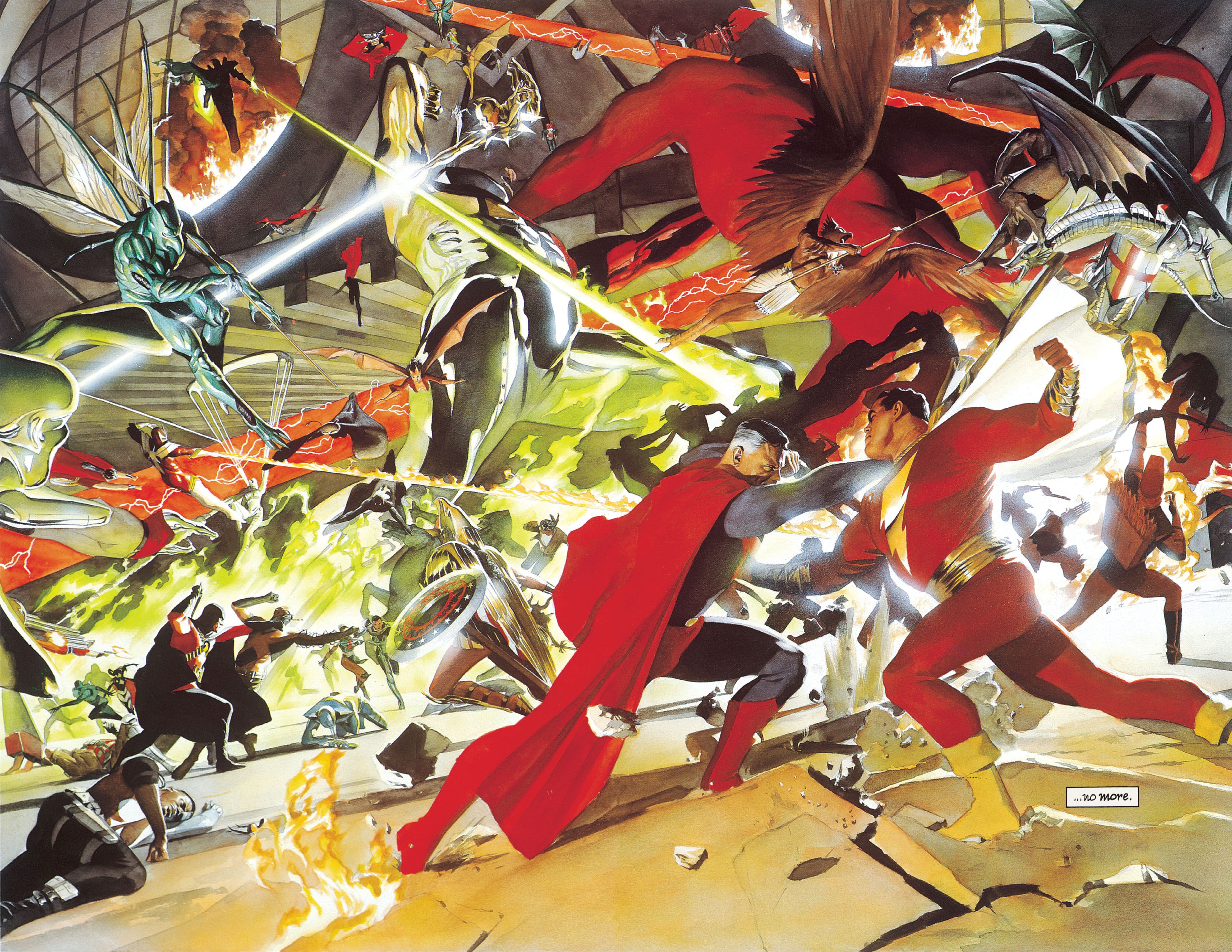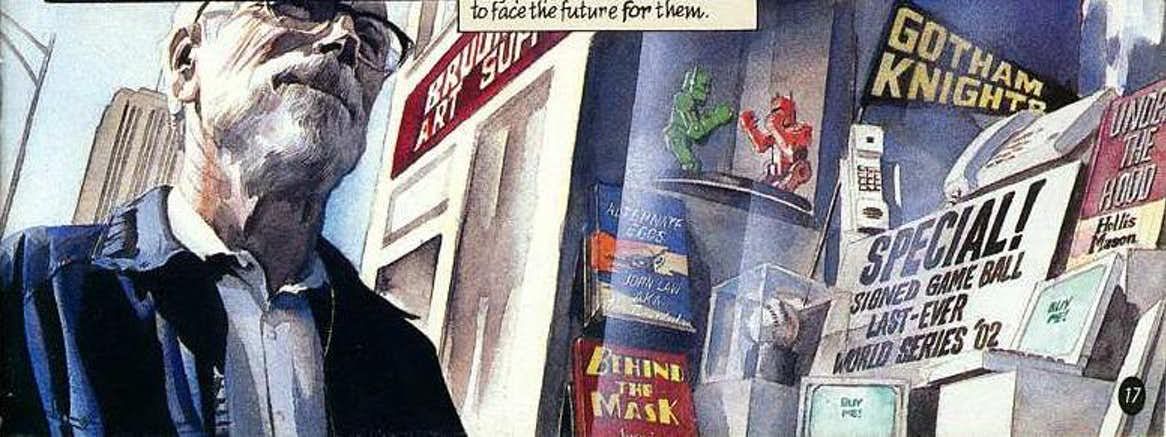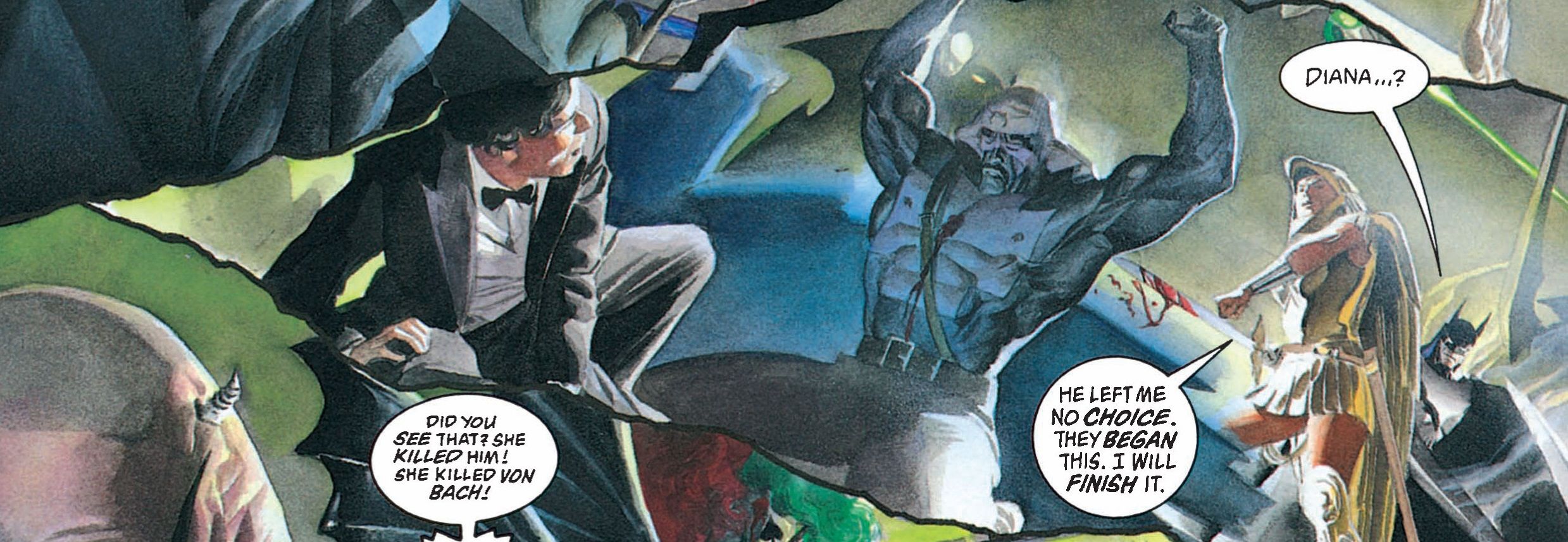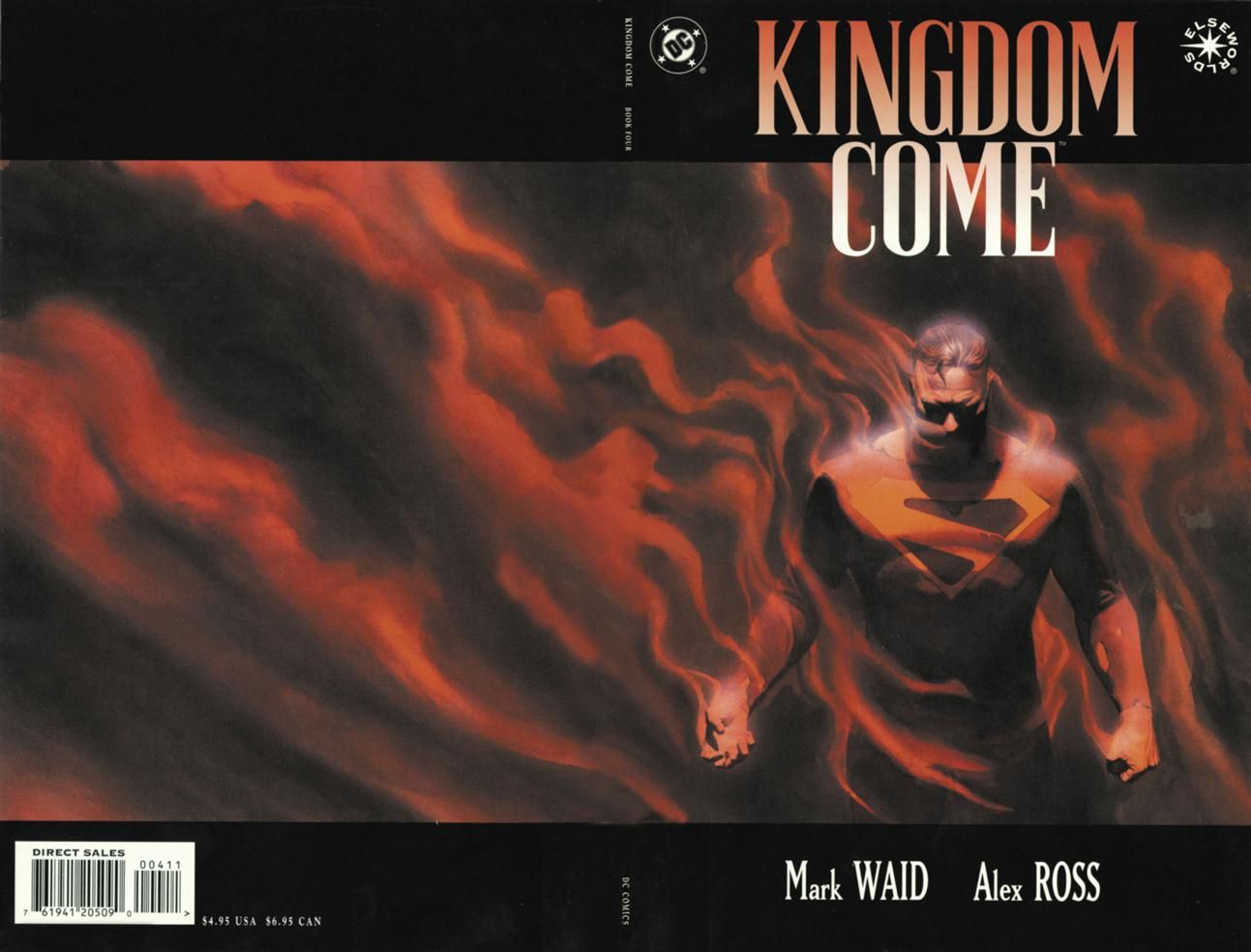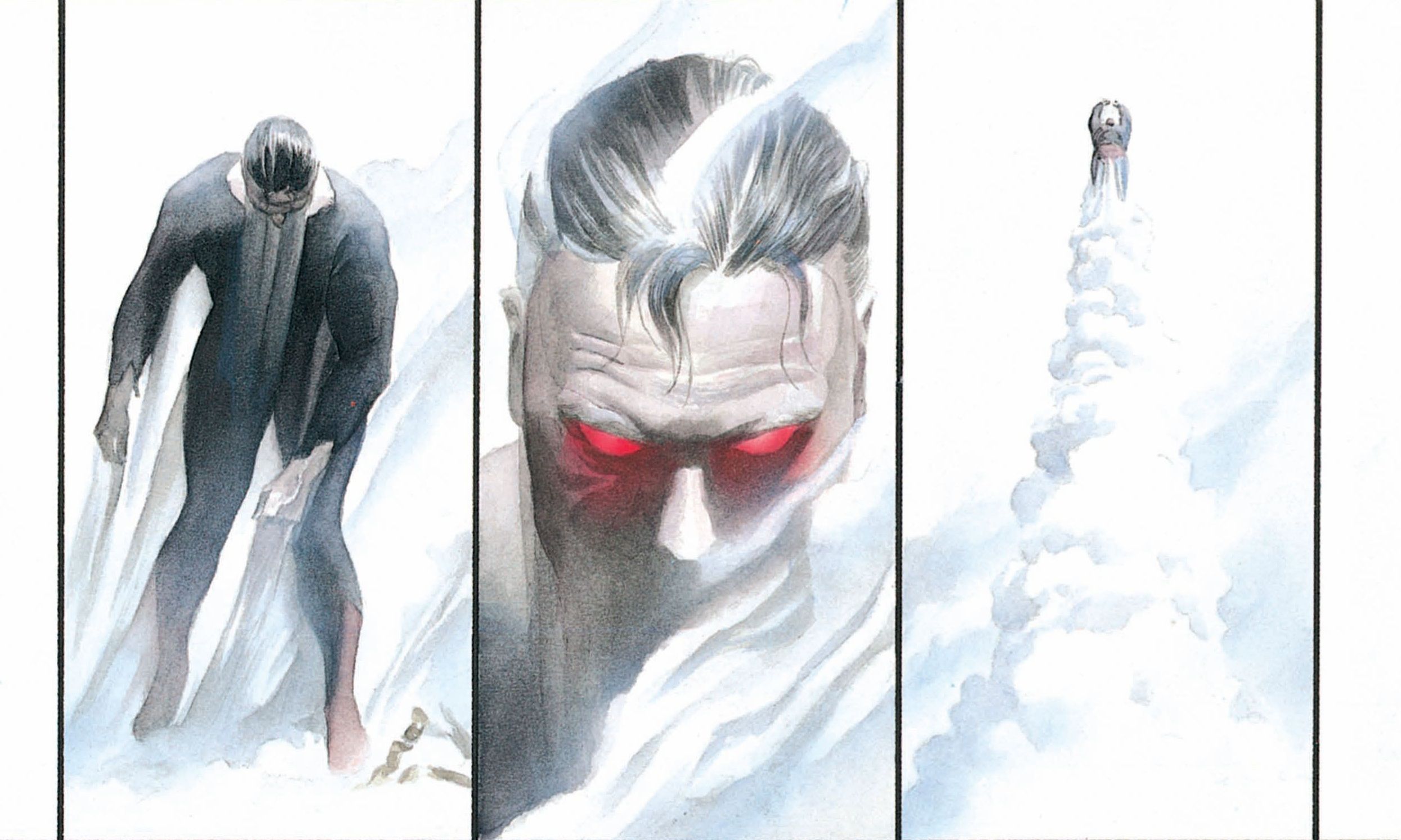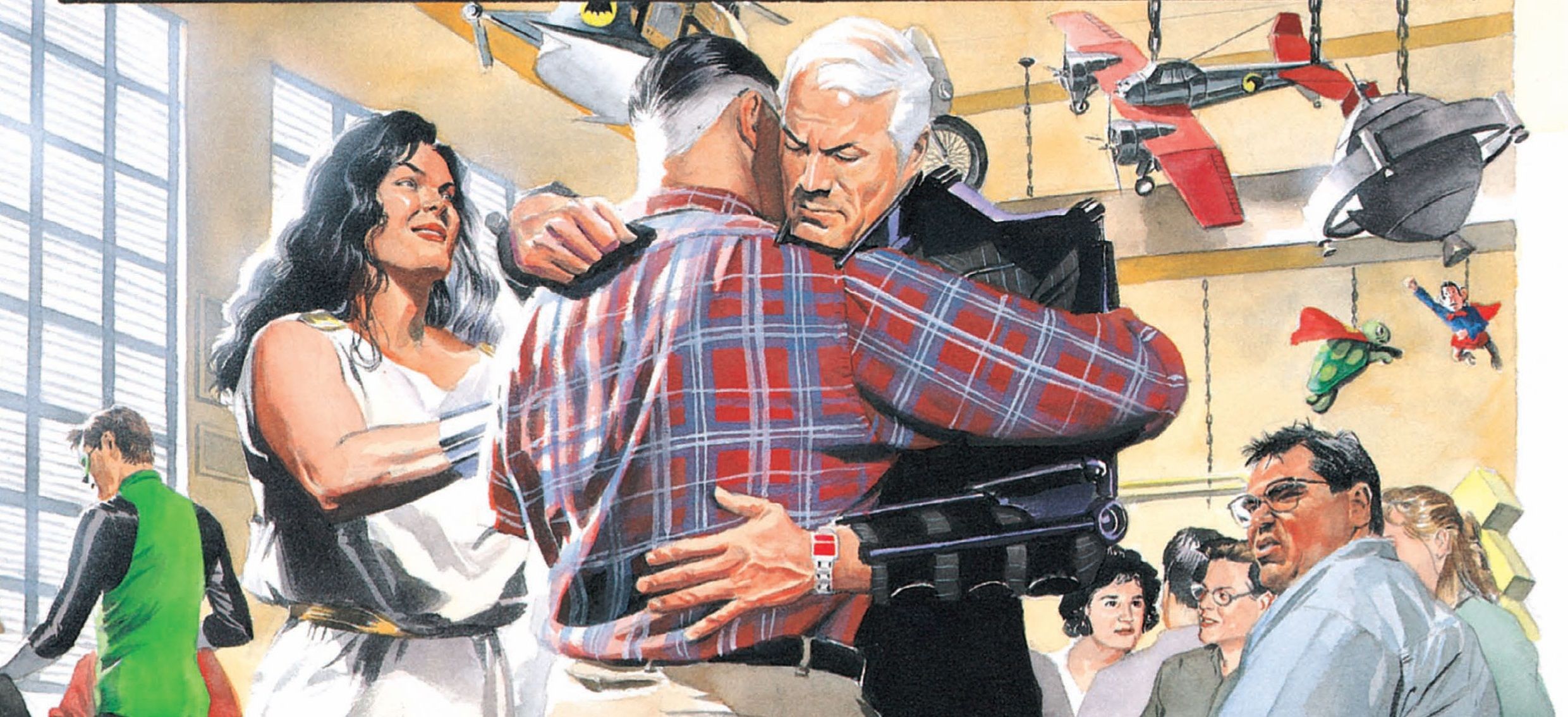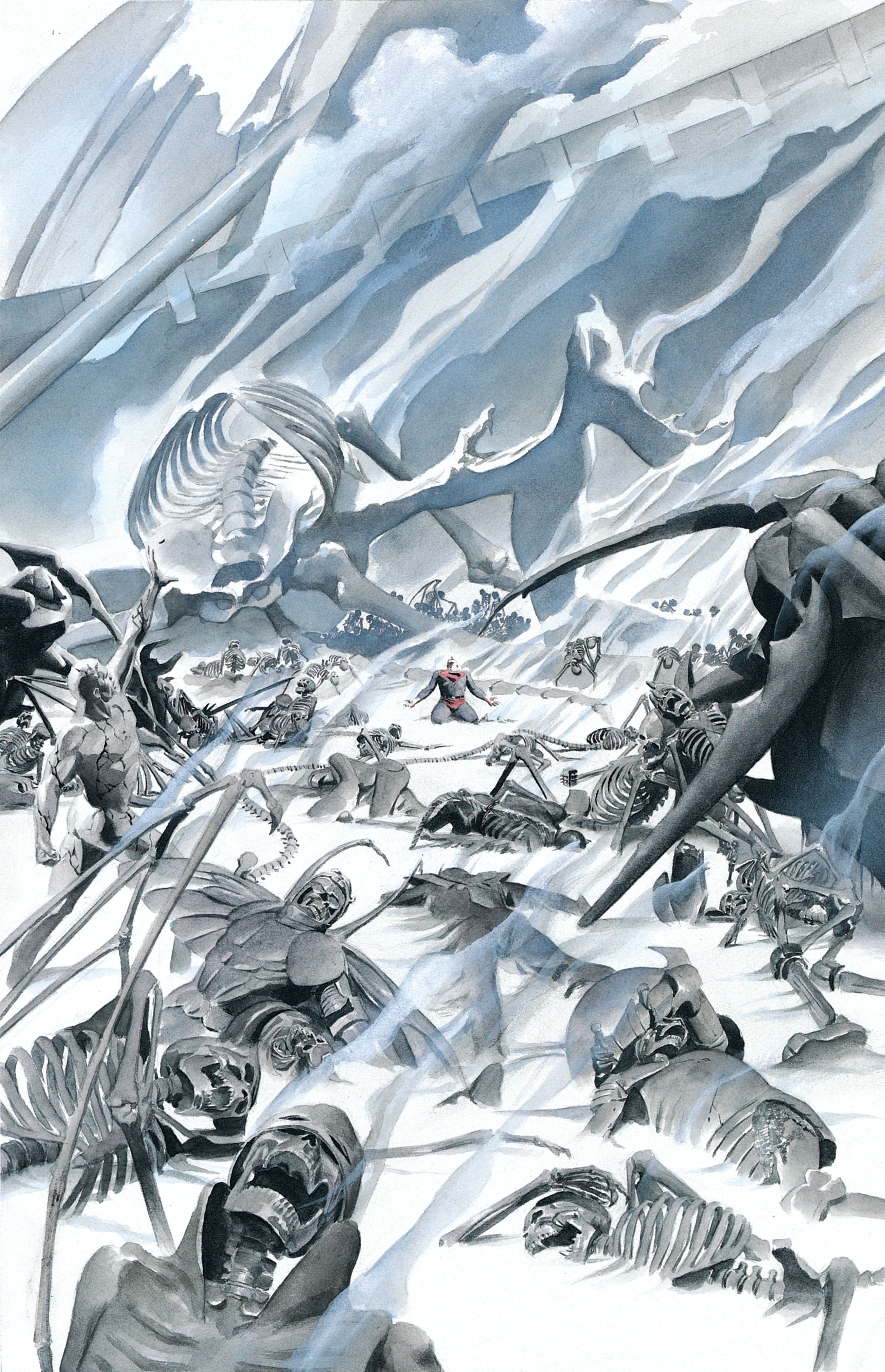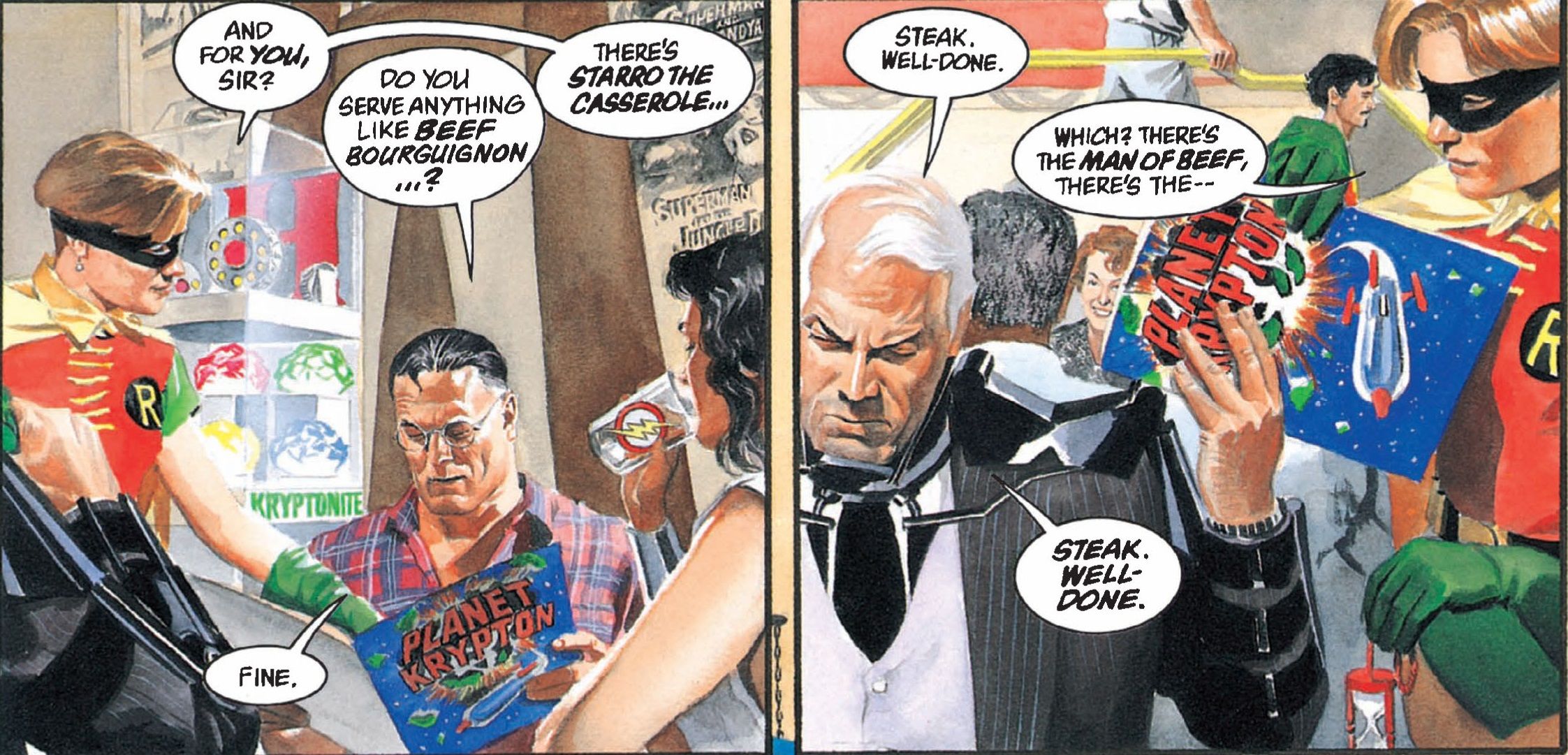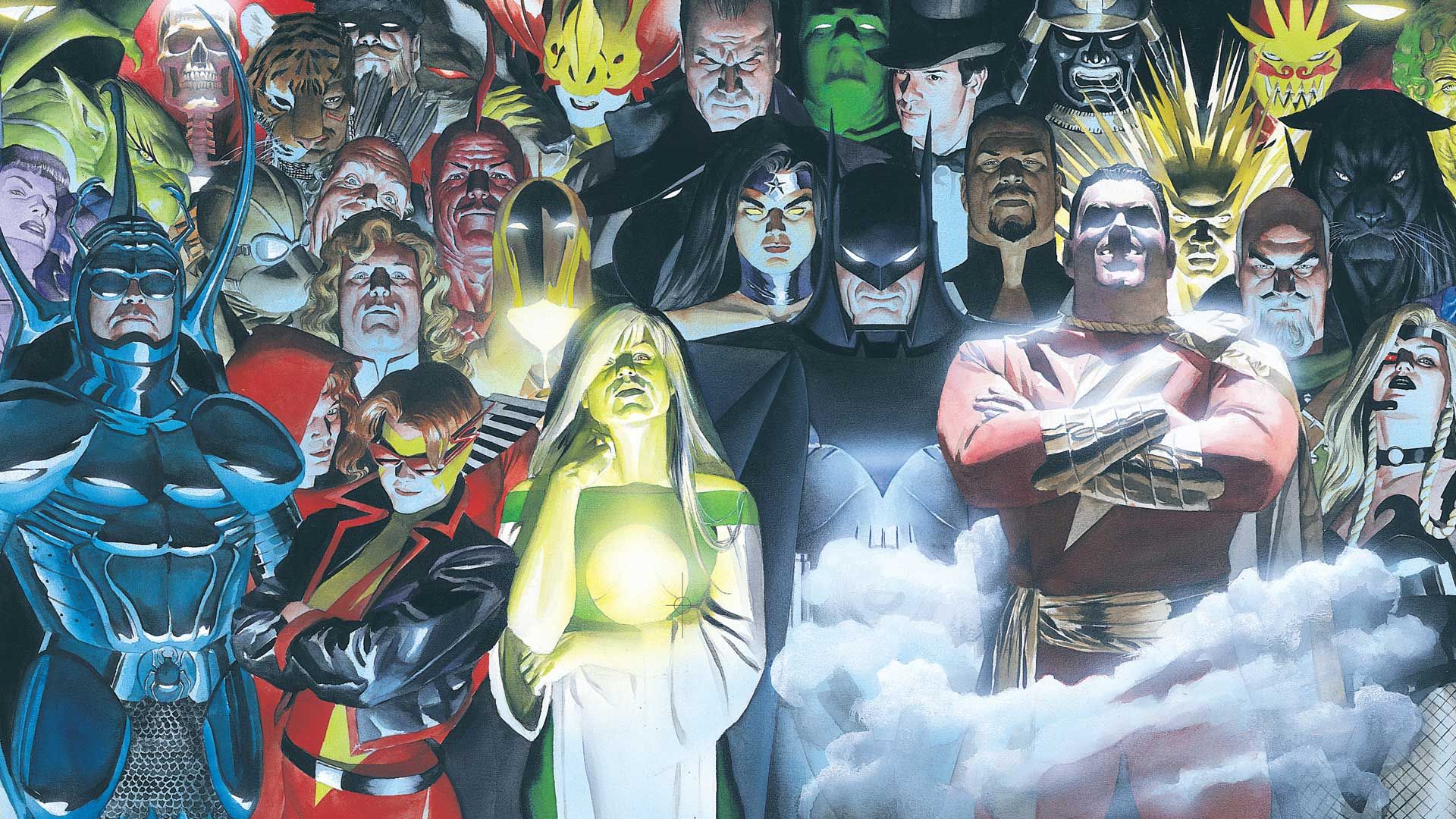DC's Kingdom Come, by Alex Ross and Mark Waid, is one of the seminal comics of the 1990s. To this day, it remains one of DC's most popular comics. Joining the likes of Watchmen, The Dark Knight Returns, and The Killing Joke, it's one of those books that remains constantly in print, and can be found in pretty much every local library. It's a lot of people's first comic book, and thus holds a special place in their hearts. Many fans even hail it as the end of the "Dark Age" of comics.
BUT!
Is it really all it's cracked up to be? Created as a response to what Ross and Waid saw as needless drama and darkness in the 1990s, Kingdom Come is an attempt to bring back classic heroes doing classic hero things. They felt comics were becoming overly dark, and drifting away from what they felt was what superheroes were all about. With the British Invasion, comics had overwhelmingly shifted into a darker and edgier state. The rise of Image further exacerbated this. So: did Kingdom Come achieve what it set out to do? Is it a great Justice League story? Is it even a good comic? Let's find out.
20 BEST: THOSE SPLASH PAGES THO
There's no one in comics quite like Alex Ross. His utterly unique, painted style is instantly recognizable on covers, posters, and inside comics. His epic splash pages remain one of Kingdom Come's greatest strengths. Waid and Ross crafted the story as an epic in the classical sense, and Ross' splash pages deliver that feeling with aplomb.
From the dramatic return of Superman, to the arrival of a reassembled Justice League, to the chilling resurrection of Captain Marvel, the full-page splashes are undeniably awe-inspiring. Alex Ross' art in general sets the book apart from most other comic books. He applied it to much greater effect in Kurt Busiek's Marvels, a similar concept to Kingdom Come, but, as the name implies, at Marvel. While the splash pages are an occasional bonus in Kingdom Come, they're the main event in Marvels.
19 OVERRATED: THE REST OF THE ART
Despite Ross' massive talent as a painter and artist, his art just really isn't suited to comics interiors, especially in hat is called the "sequential art" of superhero action comics. His style is essentially painting real people dressed up in superhero costumes doing poses. This leaves his art looking a bit static, and struggling to capture motion properly. What should be "hero recovering from getting blasted through a wall" ends up looking more like a guy lying on a couch.
While he's great at capturing close personal character moments, and those epic snapshots that define Kingdom Come and Marvels, his action scenes end up feeling lackluster. Furthermore, due to the photorealistic detail, his large-scale battles can end up overly busy with no real focus or flow. This is especially evident at the climax, where the battles end up confusing to look at snapshots rather than epic throw-downs.
18 BEST: A BROAD LOOK AT THE DC UNIVERSE
While Kingdom Come is an alternate future, it still presents a very broad look at the current DC Universe, through the lens of what it could become. Taking stops on Apokolips, the cosmic heights of entities like the wizard Shazam and the Guardians of the Universe, and a major subplot involving what the normal humans were up to, the story covers as many corners as it can.
This plays into its lasting appeal. Even though it's an alternate universe, it works great as a primer for DC comics. While a Justice League story might seem intimidating on the surface, they work great as an entry point. Because superhero comics are so large and interconnected, the best way to start is to jump in on the deep end.
17 OVERRATED: MOST OF THE CHARACTERS ARE PROPS
One of the major problems with telling such a big story with so many characters is that you can only focus on so many at a time. Kingdom Come, for all the flash and grandeur, is really a Superman story at its core. This reduces several other characters (notably Wonder Woman) to side characters in his story, and worse yet, several major characters to props for action scenes.
The most egregious of these are Green Lantern, Hawkman and Flash. Major heroes in their own right, these characters are reduced to non-speaking roles. While Flash does get a brief key story moment with viewpoint character Norman McCay, the others essentially exist only to fill out action scenes. Most of the newer heroes are also reduced to this role.
16 BEST: NORMAN MCCAY
A frequent criticism of Superman and the rest of the Justice League comes from their massive power. How, readers ask, can we relate to these characters? They are like gods, and we are mere mortals! Kingdom Come answered that question with the character of Norman McCay. A pastor, Norman starts out as a friend to Wesley Dodds, the Golden Age Sandman. Upon Dodds' death, Norman inherits his apocalyptic visions.
Joining with the Spectre, Norman then serves as an observer and narrator to the story. He serves as a down-to-earth, mortal view of the clashes between gods and monsters. He provides a much needed grounding for a story that could easily have been larger than life. Further, he serves to tie the Revelation narrative together, acting as the John of Patmos figure.
15 OVERRATED: THE REVELATION NARRATIVE CAN BE OVERBLOWN
On the flip side of Norman McCay, the overarching Revelation narrative of Kingdom Come can come across as a bit heavy-handed. What could have been a very straightforward superhero story takes some turns it doesn't really need to in order to fit itself into the Revelation story. It also plays too heavily into the common criticism that the Justice League is unrelatable due to being so godlike.
While Norman McCay is there to soften the blow, he is also the main purveyor of the Revelation narrative. While it could've easily been a pastor applying a familiar story to a possible apocalypse, it's more like the story of Revelation is applying itself to the world. Certain heroes, like Captain Marvel, are broken to fit the Revelations narrative, rather than being allowed to exist as their own entities.
14 BEST: BIG SUPERHEROES DOING BIG SUPERHERO THINGS
One of the hallmarks of comics in the 1990s was heroes more concerned with fighting each other than saving people. These heroes were deeply flawed, more like humans in morality than gods. Kingdom Come focused on larger-than-life figures, saving lives and protecting the innocent. But there is a catch. Villains have gone to ground with the arrival of heroes willing to kill, so heroes are fighting heroes.
The Justice League arrives to put a stop to the fighting. They do what we expect heroes to do.Citizens are rescued. The day is saved. By providing this example to the young upstarts, the Justice League inspires the young heroes to reconsider how they've been going about things. Grant Morrison's JLA would find success a few months later by following the same basic structure.
13 OVERRATED: HEROES BECOME FASCISTS
One of the most frequently leveled criticisms about the book is that the Justice League of Kingdom Come quickly become fascists. Their mandate is less about protecting the innocent and more about imprisoning those who disagree with them. Even before the return of the Justice League, Batman and Flash have effectively turned their cities into police states.
Ironically, it is Batman and a collection of other unpowered heroes who step up against tyranny. Even though the Justice League comes to its senses after a nuke is launched, they still continue their fascistic bent in the aftermath. The group of villains attempting to wipe out or control the heroes are essentially enslaved. Batman steps up the police state nature of Gotham even further. And the conflict isn't even fully resolved, the heroes just stop fighting after so many die in the nuclear blast.
12 BEST: ACCESSIBILITY
Part of Kingdom Come's longevity comes from how easy it is to read and get into. It's a self-contained story focusing on a few familiar characters, a formula that DC has applied multiple times to great success with titles like The Dark Knight Returns and The Killing Joke. Kingdom Come takes it a step further with an ordinary human viewpoint character, in Norman McCay.
It also doesn't concern itself with getting too tied up in continuity. At most, you need to know Superman, Batman and Wonder Woman exist. As every other character besides Norman is basically background, it's not too complex for a new reader. While it might seem intimidating due to the sheer number of characters appearing on page, it's still a fairly focused story.
11 OVERRATED: CAPTAIN MARVEL'S TREATMENT
Captain Marvel (or Shazam, as he's known these days) is one of the all-time classic superheroes. For a brief moment in time, he was even more popular than Superman. But because we cannot have nice things, DC's predecessor National Comics sued Captain Marvel publisher Fawcett Comics. Between the lawsuit and declining comics sales, Fawcett eventually shut down and sold off their properties.
Captain Marvel eventually wound up in the hands of DC themselves. Then he showed up in Kingdom Come, but not as the unabashedly optimistic boy reporter Billy Batson. Instead, Captain Marvel was reframed as a mentally damaged man-child, brainwashed and mind controlled by a society of villains to be an attack dog. Turning such an optimistic icon of the Golden Age into essentially a villain (last minute redemption notwithstanding) made Kingdom Come's critique of the darkness of the '90s ring a little hollow.
10 BEST: CLASSIC LEAGUE
In 1996, the Justice League had been through dozens of non-standard rosters. Even Superman, Wonder Woman and Batman weren't regular members, never mind Green Lantern and the Flash. While Grant Morrison's JLA would return a more classic roster to the main universe, Kingdom Come also brought in a classic roster, and the classic seven.
While the League didn't include Batman, it did bring in Superman, Wonder Woman, the Flash, and Green Lantern. Rounding out the rest of the roster is Hawkman, an older Supergirl, and the Ray. The League would quickly expand to include heroes both old and new, in the vein of Justice League Unlimited. And of course, Batman would feature heavily in the story. There were some slight flaws, though. Green Lantern is Alan Scott, not Hal Jordan. Flash is Wally, not Barry. Aquaman refuses to take part in the conflict, and Martian Manhunter is reduced to a brief (and tragic) cameo.
9 OVERRATED: HEROES VS. HEROES
One of the main problems Ross and Waid had with the 1990s was the prevalence of hero vs. hero stories. Conflicts between heroes is the main driver of the plot in Kingdom Come. A hero vs. hero battle leads to the return of the older heroes, stopping a hero vs. hero battle is the impetus for the return of the Justice League, and the climax of the plot is a hero vs. hero battle.
That last part is where Ross and Waid's critique falls apart. Rather than showing a better way to tell a superhero story, they make the climax of theirs a massive hero vs. hero battle. It's also one of the areas where Kingdom Come failed to move the needle in the cape comics world. Hero vs. hero stories would only grow in popularity, culminating in Marvel's Civil War, which took several plot elements and story beats from Kingdom Come.
8 BEST: THE EASTER EGGS
Part of what makes Kingdom Come so fun to read is the hundreds upon hundreds of Easter eggs tucked away in almost every panel. The sheer number of heroes appearing allows for dozens of jokes and references, from Watchmen's Rorschach to Marvel's Captain America, Spider-Man, and Thor. Several of those Easter eggs would evolve into something far greater later on down the road.
One of the most notable is the appearance of Ibn al Xu'ffasch, son of Batman and Talia al-Ghul. Sharp-eyed readers might notice that he shares an origin with Grant Morrison's Damian Wayne, and indeed, one served as a partial inspiration for the other. A lot of the "child" characters serve as Easter eggs themselves, referencing popular comic book relationships, like Nightwing and Starfire.
7 OVERRATED: WONDER WOMAN'S TREATMENT
Wonder Woman is generally considered one of the main superheroes of DC. Focused around defeating her foes through love rather than violence, she represents a gentler superhero than Batman or Superman. But in the modern era, she's been re-characterized to be more violent than either of them, and more importantly, more willing to kill.
Her characterization in Kingdom Come is no exception. While she starts out a hero, she ends up as a tertiary antagonist. Far more militant than in the past, Wonder Woman is perfectly willing to execute belligerent heroes and villains. This leads to conflict with Superman, which in turn splits the Justice League. Wonder Woman and her faction go to violently put down a riot in the superhuman gulag, running directly counter to her kinder, gentler nature of the past.
6 BEST: NO TIME WASTED
One of the hallmarks of the Dark Age was the rise of more long-form storytelling. While previously, comics usually told a story in single issues, or possibly two or three issue arcs, the success of stories like Watchmen and The Dark Knight Returns led to more comics following the graphic novel format. This was especially evident in the recently launched Vertigo imprint from DC.
While Kingdom Come isn't necessarily critiquing on decompression, it still wastes no time, telling a story in four issues. These days, six issues is pretty standard for a story arc. So a story that lays out what it's doing, then just gets to it, is certainly appealing. This echoes The Dark Knight Returns and Batman Year One, also told in four issues.
5 OVERRATED: SUPERMAN'S ARC
At its core, Kingdom Come is a Superman story. The backstory happens because Superman quit. The plot is kickstarted by Superman's return. Superman puts an end to the conflict. Throughout the story, we see Superman struggle to adjust to a world he is unfamiliar with. We see him at the depths of despair, and his struggle to climb out. In another context, it would be a compelling character arc.
But in Kingdom Come, Superman's methods of adjusting to the new world doesn't really jive with many fans' idea of Superman. First, he gives up on superheroing and vanishes. One of Superman's key character aspects is that he never gives up. Then, after returning, he sets up a fascist rule over superheroes, imprisoning those who disagree with him. Our video game playing readers might notice some eerie similarities with Injustice.
4 BEST: PERSONAL MOMENTS
If there's one thing Alex Ross' art is suited for, besides epic splash pages, it's close, personal moments. They serve to ground what could have been an overly larger-than-life story. Between god like superheroes and a Revelation narrative, the personal moments serve to tie it all together. Like the character of Norman McCay, they provide the reader a glimpse of normalcy.
The meeting of villains in a board room serves as a chilling setup for subplots. Norman's failed Revelations sermon at the beginning of the book drives home how bleak things are in this world. Wonder Woman and Superman sitting in space discussing their changed morality serves to explain Wonder Woman's new harder edge. And of course, the famous diner scene at the end injects some much needed levity and relief into what had previously been a fairly dark story.
3 OVERRATED: NEEDLESSLY DARK
One of Kingdom Come's big selling points is that it's a return to optimistic and light-hearted superhero stories in a time of needless darkness and overwrought edginess. Despite this, Kingdom Come shares far more in common with the comics it critiques than both its creators and fans would care to admit.
It takes older established heroes and makes them darker and edgier, notably Wonder Woman and Captain Marvel. It wallows in hero vs. hero violence throughout the story. The climax even includes a mass death scene in the form of a dropped nuke. Even further, the conflict isn't really resolved. Everyone just sort of gives up and goes home. The ending is mildly optimistic, but it's pretty much the only part of the comic that is.
2 BEST: GRUMPY OLD BATMAN
One of the best characters in Kingdom Come is Batman. No longer an active crime fighter, he has turned Gotham into essentially a police state with Bat-robots. But he remains resolutely moral and grounded. One of the few major heroes to remain unchanged morally through the rise of the next generation of heroes, Batman is also one of the few main characters concerning himself with humanity, not just superhumanity.
But that's not to say he's not a cranky old man. Cartoon fans grew to love Old Man Batman in Batman Beyond, but before than, we had Kingdom Come Batman. Of course, he's still Batman, so he creates intricate schemes and plans to both save the world and get one over on a group of villains attempting to win him over. Not to mention the classic moment of Batman ordering his steak well-done.
1 OVERRATED: THOSE KIDS TODAY
The main failing of Kingdom Come comes not from any inconsistencies in the plot, or how certain characters are treated, or whatever art foibles it might have. Instead, its greatest weakness is that it was already left behind. While cape comics were in a pretty dire state in the 1990s, they were also in a period that pushed the genre further than it ever had been.
Sometimes, the pushes went too far and failed. But other times, we got some of the best comics put to print. While Ross and Waid did have a point that comics had gotten needlessly dark, they went about it in the wrong way. Rather than provide a better example, like Kurt Busiek's Astro City or Grant Morrison's JLA, they told a fairly typical 1990s story.

